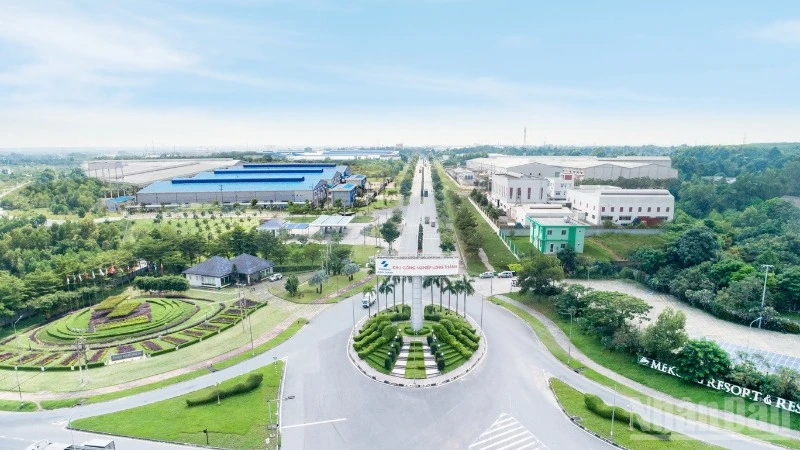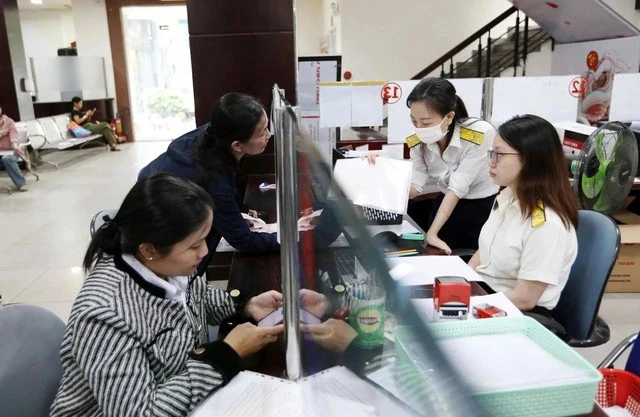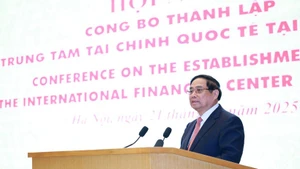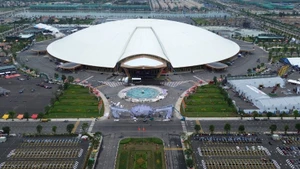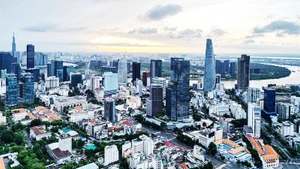For Vietnam, realising the commitments at COP26, integrating the goal of carbon neutrality into national strategies, along with the process of promoting comprehensive digital transformation, requires synchronous coordination between institutions, technology and resources.
Causes and consequences of global climate change
The 1992 Earth Summit, hosted in Rio de Janeiro, served as the first milestone in raising worldwide understanding of sustainable development (the United Nations, 1992). The world took sustainable development seriously for the first time at this event, which adopted important documents about environmental protection, alongside forest conservation, international climate change and biodiversity conventions. Many warnings from the 1992 Earth Summit about environmental sustainability failed to gain sufficient attention from policymakers as time passed beyond three decades. The human race maintains its insufficient responses by using exploitative practices that waste natural resources while promoting deceitful greenwashing campaigns and uncurbed development policies.
Greenwashing describes deceptive methods companies use to trick public audiences about their environmental friendliness (Kulalı Martin and Sancar Demren, 2024). Three notable instances of greenwashing occur in Volkswagen’s “Dieselgate” emission fraud, while H&M promotes its “Conscious Collection” with distorted marketing, and BP continues to invest in fossil fuel production while presenting a sustainable brand image (UNCTAD, 2024).
A global disaster occurred during 2024 as the planet saw record-breaking extreme weather events, including catastrophic super typhoons, massive floods and destructive wildfires, along with extreme droughts and intense heatwaves across the entire world. Munich (2025) documents that natural disasters caused 320 billion USD in economic harm and 18,100 fatalities. Extreme weather events grew more intense and frequent during the year, as witnessed through Typhoon Yagi, Canadian wildfires and the African droughts.
Global climate change events damaged worldwide agricultural outputs when wheat production dropped 30–40% in France, and drought affected 59% of Brazilian territory. The World Meteorological Organisation designated 2024 as the moment when climate limits ceased to exist.
The crisis demands immediate resolution according to scientific indicators. Global temperatures remained above 1.5°C above pre-industrial levels for 12 consecutive months (Andreopoulos et al., 2015) - a historic first in recorded history. Long-term greenhouse gas accumulation within the atmosphere has established a new record for atmospheric temperatures. Delayed climate action from the past decades caused emissions to surpass their established safety limits. The natural carbon storage systems, like forests and oceans, have reached their absorption capacity, which weakens their ability to absorb extra CO₂. Black carbon, as well as tropospheric ozone, have, along with other short-lived climate pollutants, accelerated the rate of global warming. Multiple interacting climate factors have so far created a state of lasting thermal unordered system that exists throughout Earth's atmosphere.
Atmospheric CO₂ levels reached 423 ppm—the highest in 2 million years (Ruppel, 2011), with over 36 billion tonnes emitted annually, primarily from fossil fuels. Human activities have led to the highest observed CO₂ levels because emissions have exceeded natural absorption on geological time scales. Amounts of CO₂ receive insufficient attention. The increase in global energy usage among regions which use coal and oil means that emissions persist at high levels. The excessive carbon release from human activities surpasses the ability of ecosystems to capture carbon from the environment. The chemical production of cement and steel products releases significant amounts. The deterioration of forests together with peatlands diminishes their ability to store carbon, therefore permitting additional CO₂ to remain in the environment.
Sea levels are rising at double the rate projected by the IPCC a decade ago, due to accelerated ice melt in Greenland and Antarctica (Wong et al., 2013). Nonlinear ice sheet dynamics represent the main reason behind sea level rise acceleration because scientists previously underestimated these processes. The bases of polar glaciers undergo melting from below due to ocean currents that have entered these regions because of warming oceans. Surface melting rises due to temperature increases that invoke meltwater lubrication, which accelerates glacial movement toward the sea. Ice shelf structural collapse eliminated the natural glacial movement barriers which previously existed. New technology in satellite observation indicates these transformations surpass earlier predictions of ten years ago regarding both pace and extent of change.
Eighty-five per cent of global wetlands have been lost (Davidson, 2014), and over one-third of the world’s population now lives in areas with severe clean water scarcity (IPCC, 1991). The major reason for wetlands' dramatic decrease stems from land conversion, together with agricultural encroachment and urban growth projects that either drain floodplains or alter their natural states. The presence of industrial contaminants, along with untreated sewage water, has significantly reduced the ability of surviving wetlands to act as water purification and storage mechanisms. The surge of human population combined with agricultural water mismanagement has created severe strain on freshwater sources across the planet. The changes caused by climate change have deepened water scarcity because of shifted precipitation patterns coupled with lengthy drought periods. The shortage of water supply outpaces human requirements in numerous regions, leading to a dangerous water-drinking gap.
More than 1 million species of flora and fauna are at risk of extinction in the coming decades if environmental degradation continues (Heywood, 2011). The global ecosystem faces a serious risk of biodiversity loss due to increasing environmental destruction. The decline in the quality of natural habitats has put many species of animals and plants at risk of extinction. Scientists have warned that unless human action is taken, millions of species could disappear forever in the near future. Deforestation, pollution and climate change are undermining the ability of many species to survive. The 2019 report from IPBES paints a worrying picture of the current pace of biological degradation (Willot et al., 2019).
Climate change and environmental degradation are creating a chain of serious and intertwined consequences on a global scale. The continued rise in global temperatures above 1.5°C not only drives more extreme weather events, but also weakens nature’s ability to absorb carbon, destabilising the climate system (Ruppel, 2011). Record levels of CO₂ from fossil fuel burning and heavy industry have caused a sharp increase in the greenhouse effect, leading to ocean acidification and damage to key ecosystems. Meanwhile, sea level rise is more rapid than predicted, seriously threatening coastal areas and increasing the risk of climate migration. The extreme decrease in wetlands, coupled with a water scarcity crisis, intensifies threats against human wellness and water supply protections. Earth's rising temperature serves as more than a warning because human disturbances of natural systems through excessive development unfold into an evident harsh reality. Science makes no denials about climate change as it emerges as an absolute certainty. The planet's climate system shows a growing risk of endangerment through various extreme events, which form a continuous pattern. These impacts develop in an environment where more than one million species are approaching extinction while damaging ecosystem operations, thus endangering future human existence.
The term “green development strategies” often remains rhetorical, lacking the transformative force to halt ecosystem degradation and offer real solutions. Simultaneous increases in greenhouse gas emissions and excessive interventions in river basins, forests, and wetlands continue to drive this environmental crisis. In its earlier development phase, Vietnam relied heavily on hydropower as a primary energy source, given its limited capacity to develop cleaner alternatives such as wind, solar, or nuclear energy. This led to the construction of hundreds of hydropower plants, requiring the clearance of hundreds of thousands of hectares of mostly primary forests for reservoirs, severely altering ecosystem functions. The flooding and rise in groundwater disrupted vegetation patterns, destroyed wildlife habitats, reduced biodiversity, and interfered with natural hydrological cycles, intensifying drought in dry seasons while exacerbating floods and landslides during wet periods. As the host of the P4G Summit 2025, Vietnam has a pivotal opportunity to move beyond symbolic commitments and demonstrate real leadership by advancing science-based, systemic climate solutions. The Summit must serve as a platform not just for dialogue, but for decisive, coordinated action that acknowledges past shortcomings and forges a new, greener trajectory for inclusive and resilient development. Empty promises and surface-level fixes are no longer an option - we must act now to prevent irreversible climate destabilisation.
The role of digital transformation and green growth in sustainable development
 |
| Vietnamese start-ups participate in InnovFest x Asia 2024 technology exhibition in Singapore. (Photo: KY DUYEN/NDO) |
Digital transformation is not simply applying technology to production and business activities, but a profound revolution in thinking, organisation and social governance. In an era where climate change and resource crises pose serious challenges, digital transformation has emerged as a strategic pillar, helping to realise the goal of green growth, reducing carbon emissions and promoting the circular economic model. Developed countries are strongly implementing initiatives to integrate digital transformation with green transformation, considering it a twin transition for high-quality growth. The European Union has concretised this direction through “twin transition” policies, while the United States, Japan and the Republic of Korea are stepping up investment in digital technologies such as artificial intelligence (AI), blockchain, IoT and big data to optimise energy, reduce emissions and protect ecosystems (Gartner, 2024). Notably, the global trend towards digital government is accelerating. The United Nations e-Government Survey 2024 reports increased investment in sustainable digital infrastructure and emerging technologies, reflecting countries’ strong commitment to promoting modern governance and greening public administration. In addition, the global digital economy is expected to reach 16.5 trillion USD by 2028, accounting for around 17% of global GDP, underscoring the increasingly prominent role of the digital innovation-based economy. In the e-commerce sector, global sales in 43 countries – representing 75% of world GDP – increased by nearly 60% between 2016 and 2022, reaching 27 trillion USD, demonstrating the enormous potential of digital transformation to expand markets, improve resource efficiency and reduce environmental impact. In this context, the P4G Summit – Vietnam 2025 serves as an important forum to discuss breakthrough solutions combining digital technology and green growth strategies. This is an opportunity for Vietnam and its international partners to demonstrate their strong commitment to promoting a development model that harmonises the economy, environment and technology, towards a more sustainable future for the world.
ESG (Environmental, Social, Governance) is a set of criteria used to assess the sustainability and impact of businesses on the environment, society and governance. Environmental considerations include the impact of businesses on the environment, including waste management, energy use and greenhouse gas emission reduction (Dobbs et al., 2011). Social evaluates the contribution of businesses to the community, employee rights, diversity and inclusion. Governance (Corporate governance) focuses on corporate governance structure, transparency and compliance with legal regulations. ESG is increasingly becoming an important factor not only in business operations but also in investment decisions. ESG has become a global trend, especially in developed economies. Investment funds and investors are increasingly paying attention to companies with sustainable development strategies. In the European Union (EU), ESG reporting regulations are becoming increasingly stringent, requiring businesses to disclose environmental and social information. By 2023, ESG investment funds exceeded 2.5 trillion USD (Bloomberg). The EU’s CSRD and US SEC regulations now mandate ESG disclosures (Munich, 2025). IFRS S1/S2 and GRI standards provide global reporting frameworks. International organisations such as the United Nations and the World Bank also promote applying ESG standards in investment and business operations (WMO, 2024). ISO standards like ISO 14001, 50001, and 26000 support green growth. Asia leads in certifications, especially in China, Japan, and Malaysia. Green investment reached a record 2.1 trillion USD in 2024. Over 90% of new electricity capacity came from renewables. China’s model—massive solar and wind installations, a carbon market, green bonds, and digital infrastructure—has positioned it as a leader in climate action (O’malley, 2025). ESG not only helps businesses reduce risks but also enhances brand value and creates opportunities for long-term development.
In Vietnam, ESG is beginning to receive attention from businesses, especially listed companies. Although awareness of ESG is increasing, applying this criterion is still difficult, especially for small and medium-sized enterprises. The Vietnamese government has also proposed policies to support sustainable development, but implementing and developing ESG standards still takes time. However, ESG offers many opportunities for green industries, renewable energy and sustainable agriculture, helping businesses improve competitiveness and attract international investment capital. Together, these trends demonstrate that digital transformation is not separate from sustainable development - it is a fundamental enabler.
Over the next decade, digital transformation will play a key role in driving ESG, as digital technologies help businesses deliver on their sustainability commitments more efficiently. Some key development trends for 2025–2035 include AI and machine learning automating climate solutions, IoT enhancing environmental monitoring, smart cities managing emissions and energy usage, and cybersecurity and data transparency supporting ESG reporting.
AI and machine learning will automate climate solutions, such as forecasting and managing emissions, and optimising resource use. IoT will improve environmental monitoring, helping to track air, water, and soil quality, enabling faster and more accurate decision-making. Smart cities will manage greenhouse gas emissions and optimise energy use, while minimising environmental impact. Additionally, cybersecurity and data transparency will become key elements of ESG reporting, ensuring businesses can disclose information transparently, protect data, and combat environmental and social reporting fraud. These trends will drive the combination of digital transformation and sustainable development, creating a more efficient and sustainable business environment in the future.
Which path should Vietnam choose in the new era?
In the 10 years of implementing Resolution No. 24-NQ/TW of the Party Central Committee on climate change response and environmental protection, Vietnam has achieved many important results in natural resource management and environmental protection (CEC, 2013). Relevant legal documents such as the Law on Natural Disaster Prevention and Control, the Law on Hydrometeorology, and the Law on Environmental Protection have been amended and promulgated, creating a solid foundation for the implementation of national strategies on environmental protection. Government agencies have also developed and implemented many resolutions, decrees, and directive decisions to realise the goals in the resolution. However, the author also points out that the implementation process still has many limitations. The implementation of policies is still inconsistent and incomplete, especially at the local level. Public awareness of environmental protection and climate change is still not strong enough, leading to limited implementation effectiveness. To overcome this situation, the author proposes several solutions in the coming time, including strengthening propaganda to raise public awareness, perfecting and reviewing policies, as well as improving the capacity of functional agencies. At the same time, it is necessary to create conditions to mobilise community participation in environmental protection, ensuring sustainable development and better adaptation to climate change in the future.
Vietnam has entered a new era of national rise, driven by discipline, innovation, and sustainability. General Secretary To Lam has outlined five strategic priorities: restarting nuclear power, expanding high-speed infrastructure, promoting science and innovation, streamlining governance, and reorganising territorial planning. Resolution No. 57-NQ/TW, issued at the end of 2024, identifies science, technology, innovation and digital transformation as core factors to promote Vietnam's rapid, modern and sustainable development in the digital age (CEC, 2024). The goal is for Vietnam to become a modern industrialised country with an upper-middle income by 2030, and a developed country with a high income by 2045. To achieve this goal, the Resolution emphasises the need to improve the institutional and policy system, create favourable conditions for the development of science, technology and innovation, as well as promote digital transformation in all fields. The Resolution also mentions the development of high-quality human resources in science, technology and digital transformation. In particular, it is necessary to reform the education and training system to meet the needs of the digital economy. Investing in information technology infrastructure and developing national digital platforms is an important factor to promote digital transformation, improve management efficiency and develop technology applications in production and services. State agencies must take the lead in the digital transformation process to create effective management models (CEC, 2024). Finally, the Resolution proposes to strengthen international cooperation to learn from experiences and receive advanced technology from developed countries. Implementing the Resolution requires synchronous coordination from the Party, the State and the whole society, with specific action plans and clear monitoring and evaluation mechanisms. Successful implementation of the Resolution will help Vietnam become a developed country with a modern, sustainable digital economy and deep international integration.
To realise Resolution 57-NQ/TW, Vietnam needs to strongly promote digital transformation and green growth, in which Hanoi can become a pilot centre. As a leading force, the city must build a green innovation ecosystem, focusing on environmental technology, renewable energy and smart agriculture. This is the foundation for Hanoi to spread sustainable models across the country, while connecting with global initiatives such as P4G to attract green investment, support startups and strengthen public-private partnership for sustainable development goals. At the same time, Hanoi needs to promote digitalisation of urban environmental management, apply AI and big data in air quality control, green space planning and smart urban operations. In particular, it is necessary to pilot models such as smart inland waterway transport to reduce pressure on road traffic infrastructure, contributing to reducing emissions and congestion. Developing smart grids, combined with renewable energy and energy storage technology, will help increase the efficiency of electricity use and reduce dependence on fossil fuels. Finally, Hanoi should lead in implementing the digital eco-city model, which integrates planning solutions based on ecological indicators, clean transportation, open data and circular economy. Along with building a suitable ESG index system and ISO standards, the city can pilot transparent assessment mechanisms, combat “greenwashing”, and encourage green financial investment. Hanoi will be a model for the whole country in the dual transformation journey: both digitalisation and greening, closely linked to the Net Zero commitment and the Sustainable Development Goals by 2030.
The National Digital Transformation Programme must integrate sustainability. The first is the digital planning and environmental monitoring. The digitalisation of spatial planning helps integrate geographic, environmental and population data for evidence-based decision making. Digital environmental monitoring systems will collect and analyse real-time data on air, water, noise and emissions quality. As a result, authorities can control environmental risks earlier and manage resources more effectively.
The second issue is the application of smart technology in agriculture and industry. Digital technology such as IoT, AI and big data must be applied to optimise production, save resources and reduce emissions in agriculture and industry. Smart agriculture allows real-time control of humidity, fertilisers and diseases, increasing productivity and reducing pollution. In industry, digitalising production lines and energy management helps businesses move towards green and circular production models.
Lastly, it is important to build digital platforms for ESG and climate data. Vietnam must develop dedicated open data platforms on ESG and climate change to standardise, store and share information transparently. These platforms will support businesses in ESG reporting, while helping the government track progress towards Net Zero and SDGs. Integrating national ESG data will also facilitate attracting green finance investment and enhance international cooperation.
As a result, seven suggestions are recommended. Firstly, it is essential to enforce Resolution No.57 with innovation hubs and green tech centres in Hanoi and major cities. Secondly, the national climate data infrastructure and AI-powered smart cities should be developed. The third is the base development on ecological capacity, and Hanoi should be piloted as a “Digital Eco City.” Fourthly, green finance through bonds, PPPs, and climate investment funds should be mobilised. Fifthly, the focus should be on reforming education to include climate science and digital literacy. Sixthly, a national ESG index aligned with GRI and IFRS standards should be developed, with mandatory reporting by 2030. Seventhly, support for ESG-compliant enterprises through tax incentives and third-party audits is needed.
The period 2025-2035 will be pivotal for Vietnam to restructure its growth model, towards a low-emission, highly adaptive economy, while effectively taking advantage of opportunities brought by digital technology. New Resolutions and Decisions from the Government will be an important opportunity for Vietnam to demonstrate its proactive role, contribute to the global process, and promote public-private cooperation, innovation and technology transfer to serve green and sustainable development goals. Vietnam must act decisively to synchronise digital innovation with sustainable development. Climate resilience, technological leadership, and ecological responsibility are now critical for long-term prosperity. The green-digital synergy is not a trend—it is the future.



